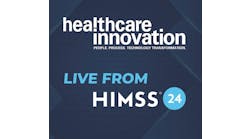Dandelion Health, a real-world data (RWD) company, has launched a GLP-1 Data Library, which it describes as a multimodal real-world clinical data set built specifically to surface insights and opportunities related to the GLP-1 receptor agonist drug class. In an interview with Healthcare Innovation, Dandelion co-founder and CEO Elliott Green spoke about Dandelion’s business model as well as the significance of the GLP-1 Data Library for researchers.
Healthcare Innovation: How has Dandelion created a data set that covers 10 million patient records?
Green: We’ve created a data consortium of multiple health systems: Sanford, the largest rural provider in the U.S.; Sharp in San Diego; and Texas Health Resources, which is the largest provider in North Texas. And we'll be adding more as we go along and many multiples of millions of patients.
HCI: What’s the the benefit to the health systems of participating? Do their researchers get access to the larger data sets?
Green: I just came from a call with Sanford’s clinical informatics team, and we were working out a schedule to give them their own data back. So yes, that's one of the benefits. We also share revenue with them. One of the big things for us was this idea of creating an ecosystem where the providers were just as involved in benefiting from what we were doing as we were, so we share revenue, but we also ensure that they get those services back because we ultimately want patients to be able to benefit from AI faster. The ecosystem is a lot more than just data. It's a real partnership. We provide context to that data. What we do is de-identify and tokenize it and pull it into our cloud. Then we make it available for researchers, providers, payers, pharmaceutical companies, medical device and AI developers, anyone who wants to build AI tools.
HCI: Another example of a real-world data consortium is Truveta. Are they focused on something different?
Green: I think Truveta has gotten broader but less deep. What we're focused on is a much deeper and more complete understanding of the patient, with the imaging, the biopsies, the patient telemetry data. They just can't do that at 32 health systems.
HCI: Is there any class of data that is the most challenging to access?
Green: You may know this from having spoken to vice presidents of enterprise analytics enough times: most of them don't know where their PACS system is. Imaging is not used in that context. It's mainly used in the context of a physician wanting to see a patient’s history, and searching for the associated scans. It's not built for our use cases. So we have to actually index a lot of the PACS systems to pull the information out. And then on top of that, you've got so many different formats, and what's encrypted, what's not, and which server is it on? Is it in a vendor neutral archive or not? Those are the in-the-weeds challenges that we’ve got. It’s why it's taken so long. That's why a lot of people don't do it.
HCI: Let’s turn to the GLP-1 Data Library. Could you talk about some of the potential implications for the entire U.S. health system of the huge rapid uptake of these drugs? For one thing, there are huge patient outcome and cost issues that CMS and other payers must be weighing.
Green: It is moving so quickly. One day it's cardiovascular treatment as a secondary indication benefit, then it's Parkinson's. Now it's sleep apnea. We're all thinking about what could be in the future, but actually the benefits are happening now. Patients with these issues are receiving GLP-1s and they are having either the positive or detrimental effects occur to them. Historically, we've had to wait until a clinical trial is over to understand that well. That’s the whole point about having a data set like this. We should be able to cut that development cycle and that understanding for providers, so that we can get to an understanding of patient cohorts more quickly. Who responds and who doesn’t and why? We can start to answer questions like: What is the benefit? How do we quantify it? We have a research paper coming out next week looking at some of these issues.
HCI: So among the 10 million patients in your data set, there are 200,000 who are already on the GLP-1 agonists. Is that right?
Green: Now it is probably 250,000. There is a question of how big this could get. There are some estimates that it could be something like 9% of the population by 2030. I mean, that's 30 million people.
HCI: Do you believe that this real-world data approach will not only be potentially faster than clinical trials, but also because you're looking at a broader set of data around a person, it's likely to be a more accurate picture of a patient’s journey?
Green: One of the things about a clinical trial is that you create this bubble within which you try and pull very, very specific information on very specific things. I don't think we can we can pretend to replicate that perfectly. But at the same time, I think how something performs in the real world is as, if not more, important than how it performs in a randomized clinical trial. Because that's going to give you a clue as to how it actually works when people are starting to take it. What do we need to understand, especially in terms of some of the co-morbidities? So we anticipate this being incredibly insightful for people.
HCI: Do you already have some partners lined up for this work? Or are you just announcing it now and then see who comes to the table?
Green: We already have people lined up, but we're right at the beginning. We did what you should do with every product, which is eat our own dog food. We already did that with the research. We have a bunch of researchers and life science companies already working on this, and we’d like to open it up to more and more people being able to use it.
HCI: I saw that you are also working with the SCAN Foundation to advance algorithmic equity for older adults, especially for more marginalized populations. Can you talk about that effort?
Green: The SCAN Foundation is a wonderful organization, and they are actually really on the cutting edge of this space. It comes back to that algorithmic bias question. For SCAN, it was really trying to understand whether they can bring in the social and behavioral determinants of health data alongside what they already have to make sure that they are really highlighting where there are opportunities for seniors.
On the GLP-1 side, our research broke down data by age, by gender, and by race and ethnicity. One of the really interesting things we found was that women above 70 are actually some of the best responders in terms of the obesity aspect and the BMI level. That's the key about Dandelion. If we can get into that precision medicine aspect, that’s where we can really start finding the right treatment for the right people at the right time.
HCI: Your website has a news item about the creation of a free algorithm validation service, a project that was funded by the Moore Foundation. It was to allow developers to run algorithms against a large data set to help fine-tune performance. Recently we have heard about CHAI, which is working to set up algorithm validation hubs around the country. Would that be in competition with you or complementary to what you do?
Green: As it turns out, I have a meeting today to talk about CHAI, because we are likely to be very involved. They could take advantage of our expertise, having run and created this validation, to create a system that operates similar to the FDA with medical devices where they do this outsourcing of validation to different entities. I think we will be playing a very prominent role in that over the coming months.


